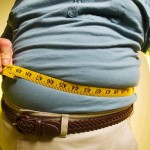How can you fix a Broken Metabolism? Part 1
If you are more than 20lbs (10 KG) overweight the chances are your metabolism is slowing and may even, in terms of fat loss, be broken.
The next 4 Blog posts will look at the four main areas that not only affect fat loss but which we can influence to achieve a leaner, fitter body in the most efficient manner.
Let’s be clear everything we do, every process that takes place in our bodies, is an output of our metabolism. There are some areas where we can effect changes to it and the area we are most interested in is the area of fat loss.
Here is a quick overview of the various factors you need to strategically combine to recondition a flagging metabolism so that it is more efficient at creating fat loss…
- Food types that:
o Boost Metabolism
o Blunt Metabolism
- The Hormonal Affects of Food:
o Fat Storage
o Fat Sparing
o Fat Burning
- The Thermic Effect of Food:
o Macronutrient ‘Burn rates’
o Food timing
o Meal Frequency
- Exercise:
o Weight bearing – lean = Higher metabolism
o Cardio – work long or work hard can’t do both
o Metabolic Circuits – HIIT, drive metabolism up and keep it up for up to 30 hours after
o NEPA – non-exercise physical activity move more!!
Any attempt to shed body fat and to become leaner & fitter is at least 80% diet. But the diet
part of the equation is not as simple as the old fashioned ‘just cut calories’ approach. This is not only outmoded but leads to poor results. As we saw in an earlier post ( http://bodyshapeshiftersonline.com/?p=100) a calorie is NOT just a calorie except as a way of measuring energy.
We now know that certain foods can increase our metabolism, these are Metabolic Fuels.
Metabolic Fuels tend to be low in sugar, lightly or un-processed and closer to nature than many of the foods you eat at the moment. These are nutrient dense foods that promote feelings of fullness, provide metabolism supporting vitamins & minerals and amino acids. They increase our metabolism by requiring more energy to process (see the upcoming part 3 for TEF), by providing essential vitamins, mineral, fatty acids and proteins for body repair & growth and by keeping blood sugar levels (see Part 2 – hormones) steady.
Metabolic Fuels:
- Any lean type of lean protein – including whey protein powder
- Eggs.
- High fibre complex carbs like Oatmeal
- Fibre rich vegetables like cauliflower, broccoli, bok choy, cabbage, and brussel sprouts.
- Dark green leafy vegetables like Kale, spinach.
- Tomatoes.
- Blueberries and other whole fruits.
- Cherries.
- Beans – any type
- Nuts – especially Walnuts
- Omega 3 & 6 fatty acids from fish oil
- Healthy Fats like Olive Oil, Coconut oil
- Greek style Yogurt.
- Green tea.
- Ice water. It costs your body around 9 calories to warm up ice water to body temperature – 25 calories per glass instead of 16.
- Dark Chocolate: Lots of antioxidants at the 70% or higher cocoa level. Just don’t eat the whole block you only need a square or 2.
Spicy Metabolic Fuels:
Chillies, curries, and other spices – many of these contain a substance called capsaicin. Capsaicin can fire up your metabolism (some studies have shown a 50 percent increase in metabolism for 3 hours after eating capsaicin), act as an anti-oxidant and assist in stabilising blood sugar.
Here are some of my favourite metabolic & flavour enhancing spices:
- Cayenne pepper
- Chilli powder
- Black pepper
- Turmeric
- Cinnamon
- Ginger
- Garlic Coriander / Cilantro
This is not a complete list by any means but the rule of thumb here is the closer to nature a food is, the more beneficial it is for reconditioning your metabolism.
On the other side our culture is full of highly processed denatured, nutrient sparse foods that blunt & slow our metabolism.
These foods lack fibre, are quick to be processed by our bodies, convert easily to sugar and often need vitamins & minerals added back to them to give them some nutritional value after processing.
Food Like:
- Sugars – fructose, sucrose, dextrose, maltodextrin, to name but a few varieties
- White Flour & white flour products like white bread, cookies, & biscuits
- White Rice, rice crackers
- Noodles
- Semolina
- Most pastas
- Soda Pops
- Cakes & Baked Goods
- Commercial Fruit Juices
- Most commercial yoghurts – especially low fat varieties (this usually means high sugar!!)
- Virtually any packaged product that screams ‘Low fat’
The rule of thumb here is if it contains ‘white carbs’ (think flour, sugar & rice) it is best
avoided or at least eaten sparingly. If it promises to be ‘low fat’ – check out the sugar content because high sugar is worse than saturated fat for your metabolism. If your Grandmother would not easily recognise it as food think twice.
Mum was right lots of leafy vegetables and fruit along with lean protein is the best way to eat.
Foods can also elicit a hormonal response from our bodies based upon calorie numbers and the quantities and types of macronutrient present. These responses can be either fat burning or fat storing.
Simply put look to move towarss food swith the fewest number of ingredients on the label. Generally fewer ingredieints means less processed and less processed means more nutrition and less calories…
Next time we’ll look at the Hormonal Affects of Food
- The Hormonal Affects of Food:
o Fat Storage
o Fat Sparing
o Fat Burning
I hope you found the information above of interest. We’ll be backnext week to look at Hormones & Fuel.




